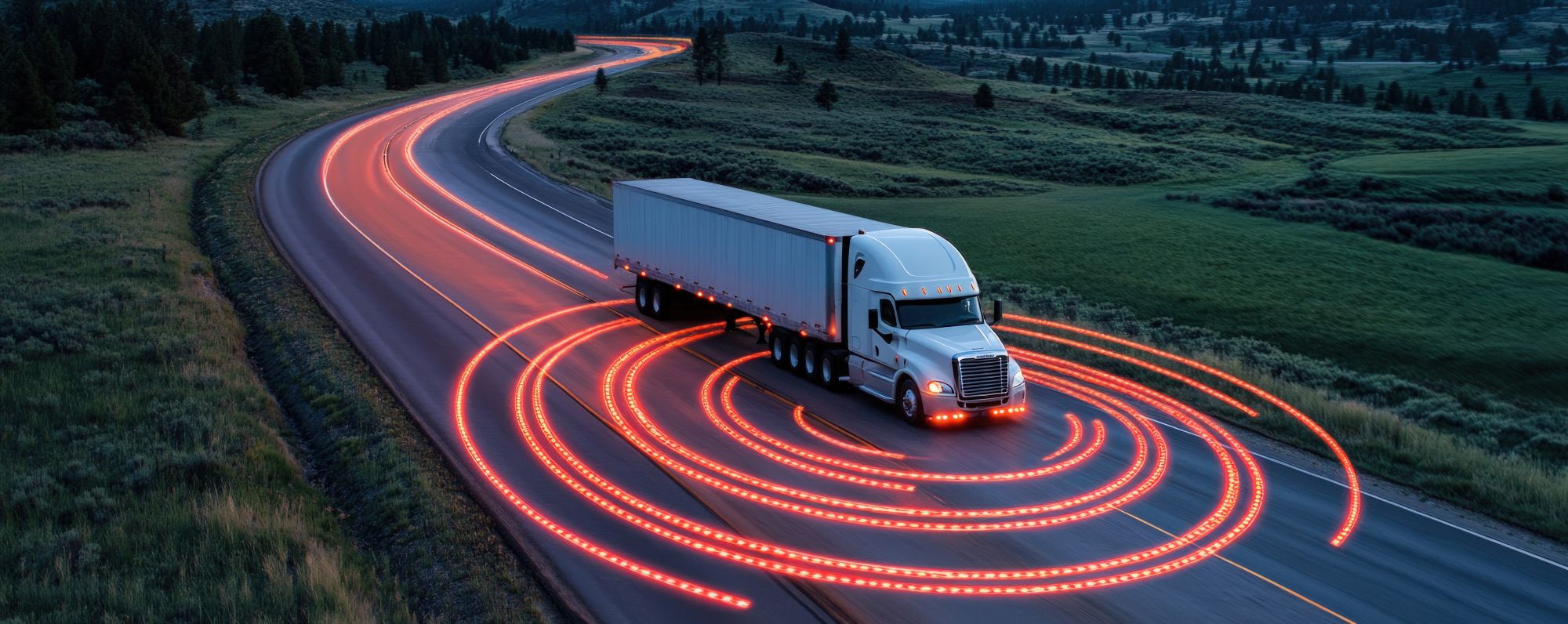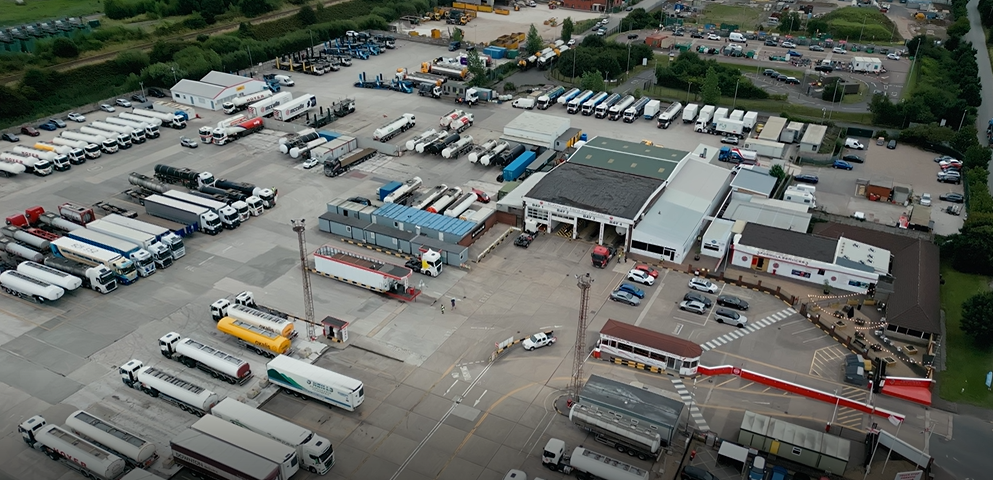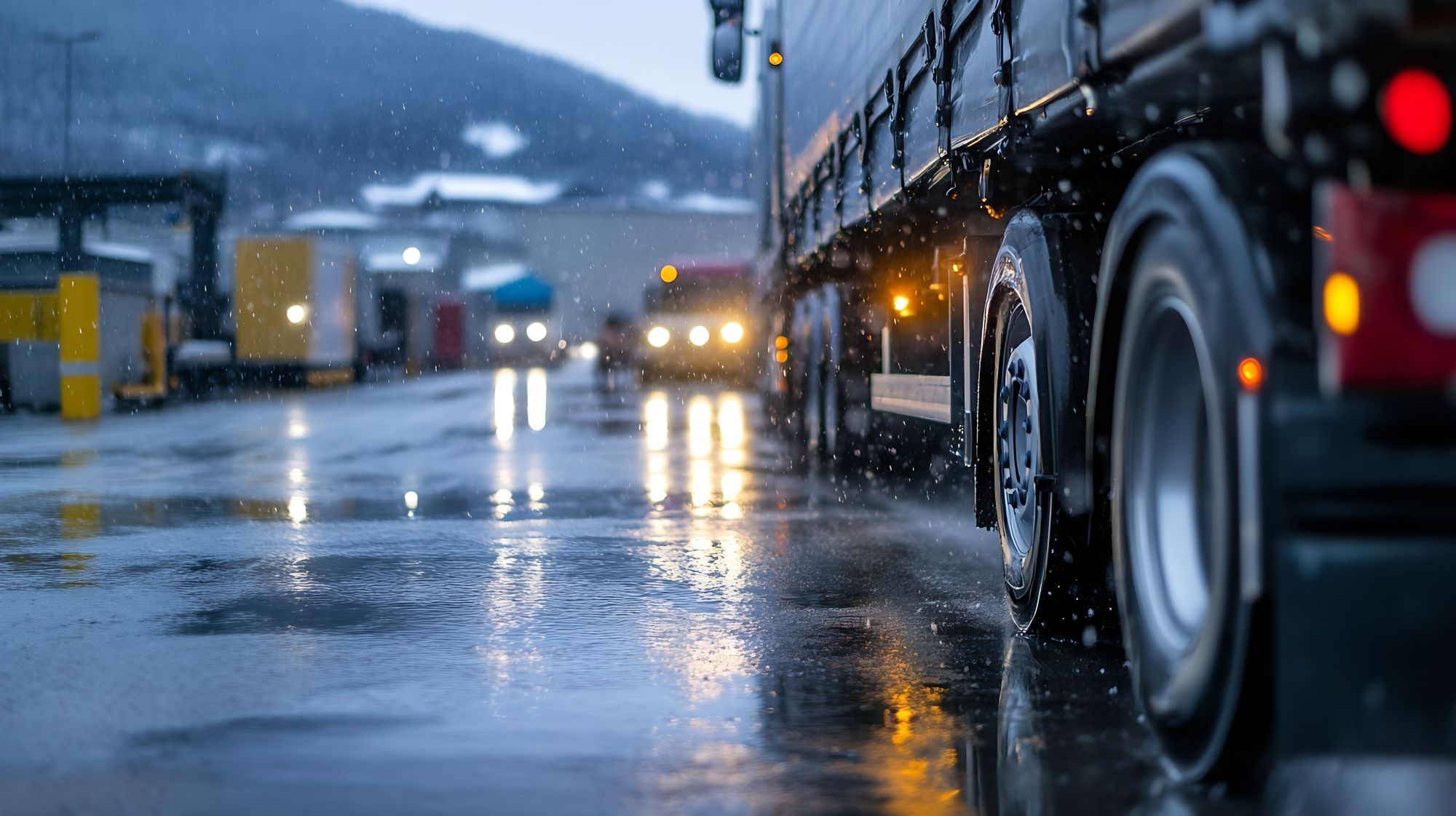
Susie Jones
Camiones autónomos: Desenredando el camino
Creado: 16/05/2025
•
Actualizado: 23/05/2025
Camiones autónomos: una idea desalentadora para algunos, pero aparentemente el futuro de la industria logística. A medida que la tecnología avanza en el sector, la perspectiva de contar con vehículos parcial o totalmente autónomos para entregar sus mercancías es elevada. De hecho, podría estar tan cerca como en 2026, según el gobierno británico, ya que en mayo de 2024, la Ley de Vehículos Automatizados (AV) se convirtió en ley.
Pero, ¿qué ocurre cuando un camión autónomo sufre un accidente? ¿Quién es responsable? En este blog nos adentraremos en el mundo de la autonomía, cómo podría afectar al sector de la movilidad, quién es responsable cuando se producen accidentes y qué opinan los conductores del cambio.
¿Cuáles son los distintos niveles de automatización?
Existen seis niveles de automatización de la conducción:
Nivel 0 - Sin automatización. El ser humano realiza todas las tareas de conducción.
Nivel 1 - Asistencia al conductor. El vehículo cuenta con un único sistema automatizado.
Nivel 2 - Automatización parcial. El vehículo puede realizar tareas de dirección y aceleración. Sin embargo, un humano sigue supervisando todas las tareas y puede tomar el control en todo momento.
Nivel 3 - Automatización condicional. El vehículo puede realizar la mayoría de las tareas de conducción. Sin embargo, sigue siendo necesaria la intervención humana.
Nivel 4 - Alta automatización. Se requiere geovalla, y el vehículo puede realizar todas las tareas de conducción en circunstancias específicas. El control humano es opcional.
Nivel 5 - Automatización total. El vehículo realiza todas las tareas de conducción en todas las condiciones. No requiere atención ni interacción humana.
¿Cómo funcionan los camiones autónomos?
Sensores, cámaras e inteligencia artificial permiten a los camiones autónomos conducir de forma independiente. Los programas avanzados toman decisiones en lugar de los conductores humanos.
Los problemas a los que podría enfrentarse la industria
Legalidad - ¿Quién es responsable en caso de accidente? ¿Es el conductor, su empresario o la empresa de mantenimiento? A continuación profundizamos en este tema.
Infraestructura - Nuestras carreteras actuales se construyeron para un mundo de motores de gasolina. Por tanto, la infraestructura debe mejorarse o sustituirse para soportar flotas de vehículos autoconducidos, lo que requiere dinero y una gran voluntad política.
Cambios sociales: la actitud de la opinión pública también tendrá que evolucionar. La perspectiva de los vehículos con inteligencia artificial es desalentadora para muchos, que temen por la seguridad, el seguimiento de los viajes y las zonas grises legales en relación con los accidentes de tráfico.
Seguridad: un sistema basado en redes digitales es más vulnerable a las ciberamenazas.

¿Qué opinan los camioneros de los camiones autónomos?
La seguridad de los camiones autónomos ha sido un tema candente de discusión dentro del sector, y muchos debaten si la tecnología está a un nivel fiable para enfrentarse a condiciones meteorológicas impredecibles y reconocer obstáculos, algo que preocupa a los camioneros en las páginas de SNAP en las redes sociales:
"A la mínima lluvia, mi camión pierde toda capacidad automática, el AEBS y el control de crucero. No hay forma de que los camiones puedan conducir solos sin conductor en un futuro próximo".
"Esto matará a más gente en las carreteras y provocará más colas. Piensa en lo fiable que es la electrónica de tu vehículo Euro 6. La misma gente está haciendo camiones autónomos".
Legalidad: ¿quién es responsable en caso de accidente?
En caso de accidente, la responsabilidad puede oscilar entre el conductor y el fabricante. El tribunal debe determinar si un accidente fue causado por un fallo técnico, un mantenimiento inadecuado o un error del conductor.
Responsabilidad del fabricante
El fabricante será responsable en los siguientes casos: - Mal funcionamiento del sensor
Fallos de software
Medidas de ciberseguridad inadecuadas
Pruebas inadecuadas
Responsabilidad del conductor/de la flota
Un conductor de un camión autónomo puede ser responsable de un accidente si descuida las revisiones o el mantenimiento necesarios para que el vehículo funcione correctamente; se podría argumentar que esta responsabilidad también podría recaer en los gestores de flotas.
A pesar de ello, sigue habiendo cierta confusión en el sector de la movilidad. Hemos preguntado a los camioneros en nuestras páginas de redes sociales quién creen que sería responsable en caso de accidente con un vehículo autónomo. El 51% de los conductores pensaba que el responsable sería el conductor, el 37% sugería que los fabricantes de camiones automatizados y el 12% creía que los desarrolladores de software.
Es evidente que se necesitan más aclaraciones entre los profesionales del sector antes de que los camiones autónomos sean un elemento permanente en nuestras carreteras.
¿Cómo es el futuro?
En su renovada campaña TruckPark of the Future, SNAP analiza el futuro del sector de la movilidad. A medida que avance la tecnología, los vehículos autónomos desempeñarán un papel importante en el sector, con un 50% de posibilidades de que las máquinas sustituyan a todos los puestos de trabajo humanos en los próximos 120 años.
Sin embargo, ¿cómo se enfrentarán a algunas de las carreteras más peligrosas de Europa?
La conducción de camiones es algo más que sentarse al volante: a menudo se trata de sortear unas condiciones de carretera siempre cambiantes e impredecibles. Esto plantea la cuestión de si los camiones autónomos podrían hacer frente a algunas de las carreteras en peor estado de Europa. En su campaña más reciente, Hazardous Highways, SNAP identificó las carreteras más peligrosas de Europa, con resultados que muestran a Bulgaria, Lituania y Chequia como las más preocupantes.
Se podría argumentar que los camiones autónomos se enfrentarán a retos al intentar circular por algunas de estas carreteras sin interacción humana. La precisión limitada del GPS, las interferencias de los sensores y la falta de infraestructuras coherentes podrían complicar las cosas.



